The cultural and historical currents on Ha Long Bay.
Known as a unique scenic destination in Vietnam and the world, Ha Long Bay is also a place that bears the marks of cultural and historical currents, preserved and passed down through many generations of residents living in the Bay.
Prehistoric traces.
Ha Long Bay and its surrounding areas are home to many valuable archaeological sites, particularly the Ha Long cultural site, one of the oldest cultures of the Vietnamese people. With relics dating back tens of thousands of years that have been excavated and revealed, Ha Long Bay is often compared to a giant museum, containing valuable information about the history of the region’s formation.
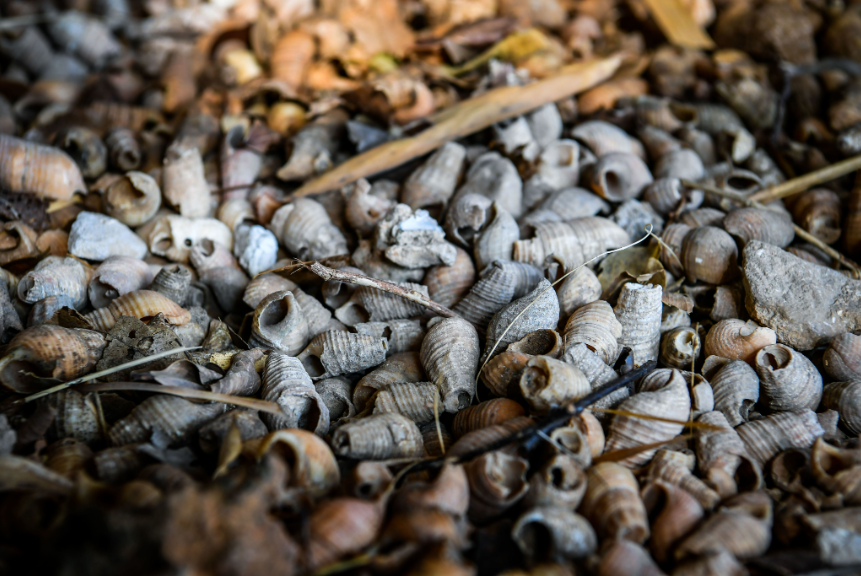
The river shell middens date back between 18,000 to 7,000 years.
Ha Long Bay is closely associated with the Ha Long Cultural Site, one of the archaeological cultures from the Neolithic period (approximately 3,000 – 5,000 years ago), discovered in several areas of the Bay, including caves, sandy beaches, and limestone islands. The relics from this culture provide evidence that this was a living area for prehistoric communities during the hunting and gathering period, which later transitioned to early agricultural production.
The distinctive values of Ha Long's maritime culture are highlighted through a diverse system of archaeological sites, distributed over a vast area of 1,553 km², with a profound representation of the maritime culture. A total of 26 archaeological sites have been recorded, belonging to three consecutive archaeological cultures: Soi Nhụ, Cái Bèo, and Ha Long, dating from 18,000 to 3,500 years ago. These sites are primarily located in the limestone islands of Ha Long Bay, Bai Tu Long Bay, and the Cat Ba Archipelago. Notable sites include: Me Cung Cave, Trong Cave, Tiên Ông Cave, Thiên Long Cave, Soi Nhụ Cave, Đông Trong Island, Hai - Cô Tiên site, Trinh Nữ Cave, the Cái Bèo site on Cat Ba Island, as well as sites on Ngọc Vừng Island and Tuần Châu. |
At several archaeological sites, which are also popular tourist attractions in Ha Long Bay, such as Me Cung Cave, Thiên Cung Cave, Sửng Sốt Cave, Tiên Ông Cave, Trống Cave, Trinh Nữ Cave, Bồ Nâu Cave, Thiên Long Cave, etc., archaeologists have discovered many stone tools, pottery, animal bones, and seashells. The stone tools, including knives, axes, and grinding stones, indicate that ancient people in this area had a relatively advanced skill in tool-making, which supported their hunting, food gathering, and other daily activities.
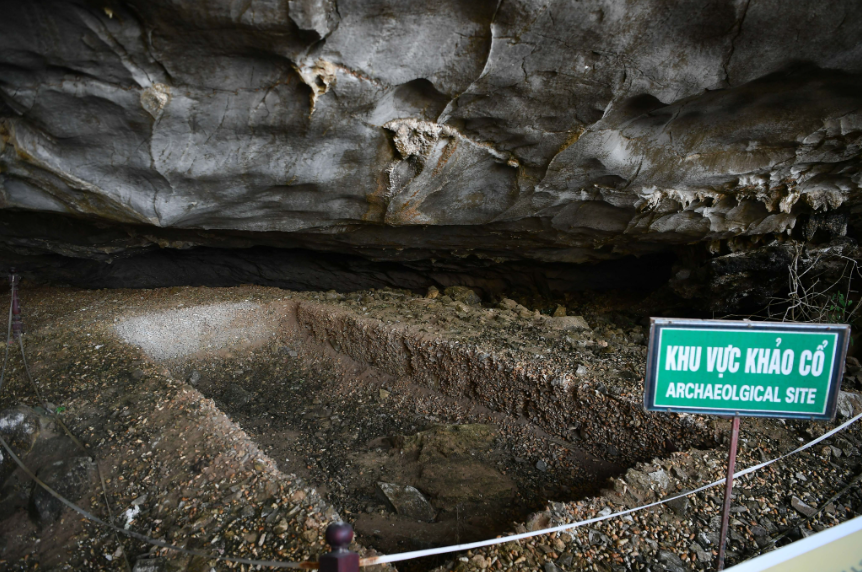
An archaeological excavation pit at Tiên Ông Cave.
In addition, Tiên Ông Cave preserves and protects excavation pits and survey holes containing layers of river shell (Melania) and mountain shell (Cyclophorus), which serve as vivid evidence of the living and dwelling patterns of prehistoric people in Ha Long during the Soi Nhụ culture. These deposits offer significant insights into the way early human communities in Ha Long used caves as shelters.
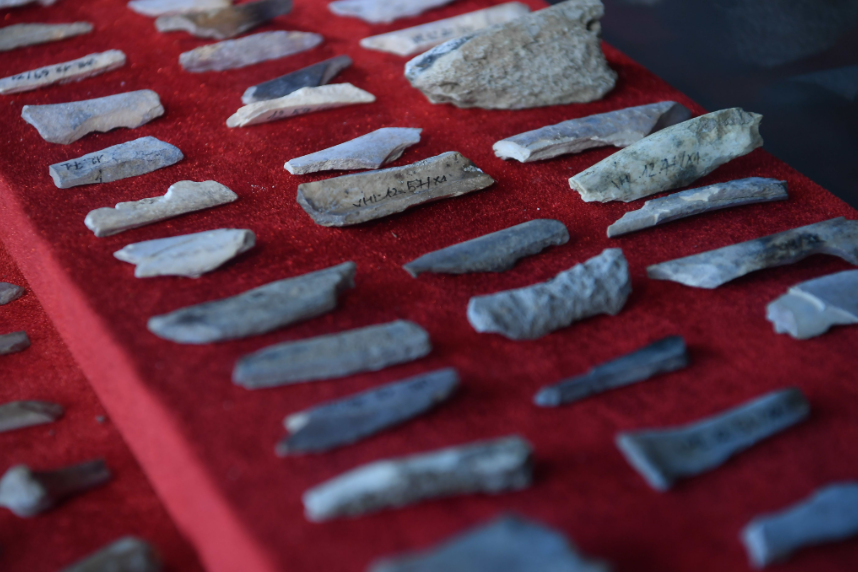
Some labor tools, the result of archaeological excavations, are displayed at Tiên Ông Cave.
Scientists have also discovered evidence of daily life, including pottery, especially fragments with intricate patterns, which are crucial pieces of evidence that help researchers better understand the lifestyle and artistry of ancient residents. These pottery fragments were found in caves such as Thiên Cung Cave and Sửng Sốt Cave.
In Ha Long Bay, Thiên Cung Cave is not only famous for its stunning landscape but also as one of the important archaeological sites in the area. Archaeologists have uncovered many artifacts from the Ha Long culture, including stone tools and pottery fragments, indicating that this was a prehistoric settlement. Thiên Cung Cave is located on a relatively high island, offering a clear view of the surroundings, suggesting that ancient people chose such locations to settle in order to avoid dangers from wild animals or other groups of people.
Similarly, Sửng Sốt Cave is also an important archaeological site. Here, archaeologists have found stone tools, animal bones, and other artifacts related to the ancient lifestyle. Just outside the entrance of Me Cung Cave, there are traces of a settlement, along with various types of shell fragments. These traces provide information about the diet, daily activities, and hunting and gathering practices of ancient people.
The tools and items found in Ha Long Bay are primarily stone tools, including stone knives, axes, etc., used for chopping trees, hunting, and food processing; as well as stone pestles and mortars, which may have been used to grind seeds or other food.
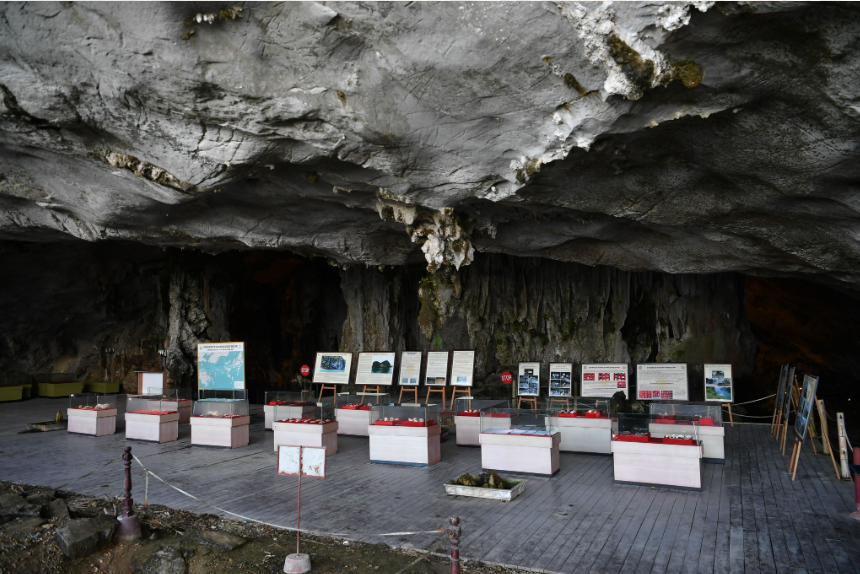
The tools also include evidence of pottery through fragments found in caves and archaeological sites, proving that the people in this area knew how to craft pottery very early on. These pottery fragments often feature intricate patterns, indicating the advanced production skills of the ancient residents.
Some archaeological sites in Ha Long Bay also reveal that ancient people in this region practiced distinctive burial rituals. Archaeologists have uncovered ancient tombs, and many studies suggest that the ancient inhabitants of this area had specific spiritual beliefs, possibly related to deities or natural elements such as the sea and forests.
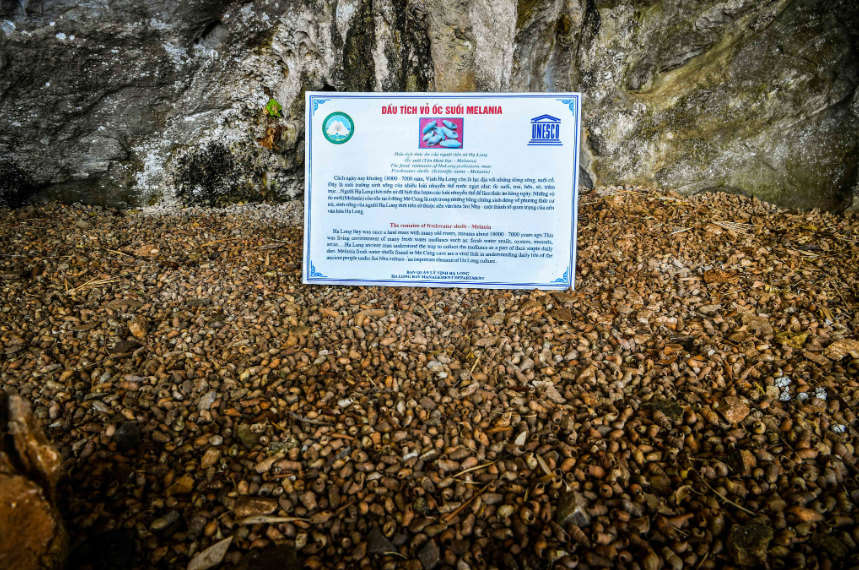
Traces of river shells dating back thousands of years were found in Me Cung Cave.
Ha Long Bay is not only renowned for its natural landscapes but also as a treasure trove of history, archaeology, and culture. From the archaeological sites and artifacts discovered, scientists have determined that Ha Long Bay was a settlement of the ancient Vietnamese people, dating back between 18,000 and 3,500 years. The discovery of these archaeological sites has helped researchers build a comprehensive picture of human development, from the Stone Age to later cultural periods.
The archaeological sites in Ha Long Bay not only shed light on the formation and development of Vietnamese civilization but also contribute to a deeper understanding of the settlement and way of life of prehistoric communities in the area. They provide evidence that Ha Long Bay was a long-term settlement, where various cultures thrived during the early history of the Vietnamese people.
Moreover, the preservation of these archaeological sites plays a crucial role in safeguarding the nation's cultural heritage, while also supporting scientific research and tourism studies.
Maritime culture from the era of founding and defending the nation.
According to Professor Nguyễn Văn Kim (Faculty of Social Sciences and Humanities, Vietnam National University, Hanoi), the process of forming and defining the identity and cultural resilience of Ha Long Bay and the Northeast islands cannot be discussed without mentioning the Lý dynasty and the prominent role of King Lý Anh Tông. He was a wise ruler who played a key role in opening the international trading port of Vân Đồn in 1149, the first foreign trade port of ancient Vietnam. This historical decision reflected the political and cultural strength of the dynasty. Today, the remains of ancient piers have been found in abundance in areas such as Cống Đông Island, Cống Tây Island, Vân Hải, and Quan Lạn, providing evidence of a prosperous period of trade and commerce in Vietnam’s history.
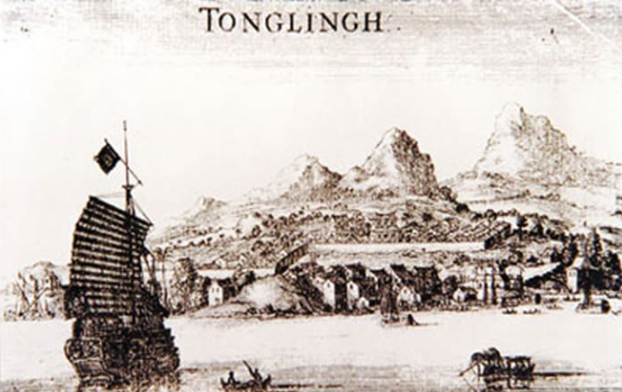
The ancient port in Ha Long Bay. (Photo: Quảng Ninh Museum)
The Lý dynasty established the Vân Đồn trading post, creating an international port and a central hub for foreign trade for Đại Việt in the face of the powerful Song Empire. To protect and assert sovereignty over the Northeast islands, King Lý Anh Tông personally undertook two inspection tours (in 1171 and 1172) of the northeastern sea and islands. He commissioned the creation of maps and personally "examined the terrain of mountains and rivers, wanting to understand the hardships of the people and the distances of travel."
It can be affirmed that in Vietnamese history, King Lý Anh Tông was one of the earliest and most profound figures to recognize the importance of maritime sovereignty. He was the first to make significant decisions and policies on the sea and islands, and also the first to implement the exploration, assertion, and protection of the country's maritime sovereignty.
During the Trần dynasty (1226-1400), 62 years after the third Mongol-Yuan invasion was repelled, King Trần Dụ Tông elevated the administrative status of Vân Đồn (in the Bai Tu Long - Ha Long Bay area) from a settlement to a province (in 1349). He also established the positions of Quan Trấn, Quan Lộ, Sát Hải Sứ, and Bình Hải Quân to oversee and defend the border and island regions.
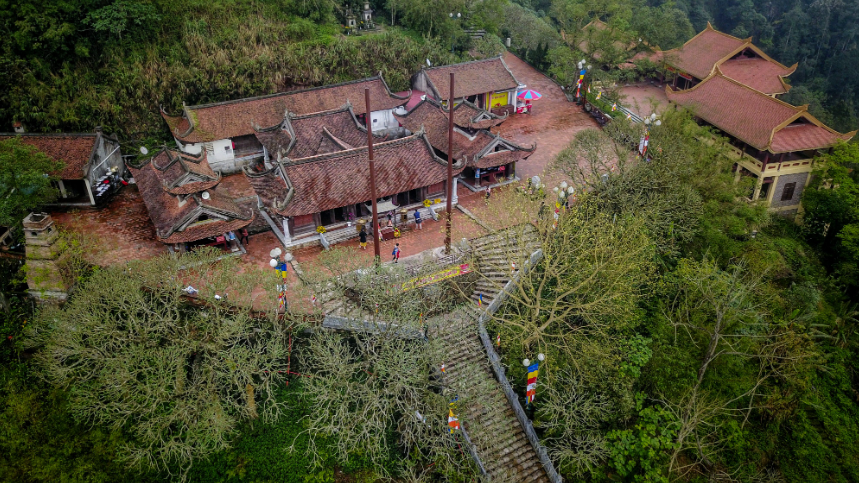
Hoa Yên Pagoda, located on Yên Tử Mountain
The Trần dynasty relied on Buddhism to prepare for and successfully carry out resistance campaigns to protect the country. The heroes of the three resistance wars established a major Buddhist center in the high mountains of Yên Tử to express the national spirit and unity, while also creating a channel for cultural exchange and dialogue with regional cultures. From the vision of Thăng Long and the Yên Tử mountain range, the Trần rulers built a cultural and sacred space in the Northeast region based on the wisdom and compassionate philosophy of Buddhism.
Professor Nguyễn Văn Kim analyzes that the presence of Buddhist relics in Quảng Ninh, the coastal region, and on islands such as Cống Đông and Cống Tây (Thắng Lợi commune)—including Chùa Lấm, Chùa Hộ, Chùa Cát, Chùa Trong, Chùa Vụng Cây Quéo, and others—demonstrates this clearly. The presence of Buddhist temples in the Vân Đồn coastal region not only reflects the spiritual needs of the coastal residents—those involved in maritime transport, trade, and fishing—but also signifies that the Lý and Trần dynasties sought to assert their sovereignty and cultural identity in the northeastern maritime region.
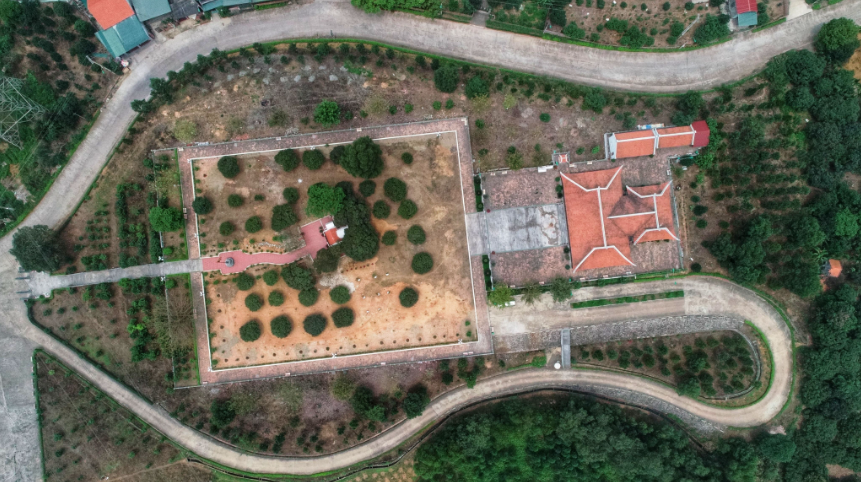
The Trần Dynasty's Royal Temple (Thái Miếu) in Đông Triều.
With the establishment of a system of pagodas and towers in the Northeast island and coastal region, the leaders of the Thăng Long government achieved great success in their strategy of establishing and expanding economic and cultural relations with the economies and cultures of Northeast Asia, Southeast Asia, and even Southwest Asia. This explains why the Vân Đồn trading port was able to maintain its position as a center for foreign economic exchange and diplomacy for seven centuries.
Professor Nguyễn Văn Kim also stated that, alongside tangible cultural heritages such as the remnants of docks and trading ports, landmarks associated with administrative management units, and the system of communal houses, pagodas, temples, and shrines, the cultural heritage of the coastal and island inhabitants of Hạ Long - Northeast region also includes many myths and legends from the founding period. Through these myths, the sea has emerged as an integral part of the history and culture of the nation. The sea is both the origin of life and the environment where many legendary figures such as Lạc Long Quân, Thủy Tinh, Chử Đồng Tử - Tiên Dung, and An Dương Vương have returned.
The Site Preserving the Traces of Battles Against Foreign Invaders Throughout the history of Vietnam's struggle for independence and defense of the nation, Ha Long Bay is also a place that marks the heroic victories of the Vietnamese people from the 10th century to the 20th century. These include: Ngô Quyền's victory over the Southern Han army (938), Lê Hoàn's victory over the Song army (981), and Trần Hưng Đạo's victory over the Yuan-Mongol army (1288). The historical Bai Tho Mountain, where Emperor Lê Thánh Tông engraved a Chinese poem on stone in 1468 during his coastal tour of the eastern sea, and the signature of Lord Trịnh Cương in 1729. Bãi Cháy, located on the western shore of the Bay, is traditionally linked to the story of the Yuan-Mongol military ships carrying supplies, which were set on fire by the Trần forces under the command of Trần Khánh Dư, causing the destruction of the surrounding forest area. In the Bay, there is also the Đầu Gỗ Cave, where traces of wooden stakes left by Trần Hưng Đạo are found, which were hidden before being used in the battle at the Bạch Đằng River. Not far from the Bay is the Bạch Đằng River mouth, a historical site of two significant naval battles in the defense against Northern invasions. During the resistance wars against the French and Americans, Ha Long Bay also witnessed many monumental historical events. On March 24, 1946, President Hồ Chí Minh met with representatives of the French Indochina government to discuss signing an official peace treaty to replace the March 6, 1946 provisional agreement, demonstrating his brilliant leadership during a critical moment when the nation's destiny was hanging by a thread. On August 5, 1964, Ha Long Bay witnessed the first victory of the North's military forces, shooting down two American planes and capturing the first American pilot in the fight against the escalation of the U.S. bombing campaign over Northern Vietnam. Ha Long Bay is also a place that records countless victories, along with the silent yet heroic sacrifices of the Vietnamese People's Navy during the years of resistance against the Americans. The Bay served as a gathering and launching point for the "unmarked ships" that supported the southern forces in their fight against the enemy. Strategic military bases in the Bay, such as the Hang Quan Cave (in the West Canal area), were once secret naval ports, from which torpedo boats launched attacks on the U.S. ship Maddox on August 3, 1964...
Historical Relics from the Resistance Wars Against the French and Americans in Ha Long Bay
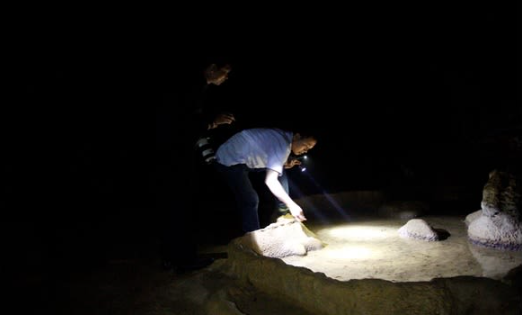
Hang Đúc Tiền (Coin Casting Cave). Photo: Ha Long Bay Management Department
Hang Đúc Tiền (Coin Casting Cave) is located on the southeastern side of Vạn Gió Island (marked as point 376 on maps, and commonly known as Cánh Quít Mountain). This cave was historically significant as a base for the Đề Hồng and Cai Thái insurgent forces, who set up a weapons and coin casting workshop here to prepare for the resistance against French colonial rule.
On May 1, 1930, the red flag with a hammer and sickle flew proudly on the top of Bai Tho Mountain, marking a new phase in the revolutionary struggle led by the working class in the mining region. This event contributed to the destruction of the chains of colonial slavery imposed by the French.
On March 24, 1946, President Hồ Chí Minh held talks with French High Commissioner Georges Thierry d'Argenlieu aboard the French warship Emile Bertin on Ha Long Bay, marking a significant moment in Vietnam's diplomatic history.
In the early 1960s, the unmarked ships ("tàu không số") that set sail from Ha Long Bay carried weapons, ammunition, and supplies to the southern forces, contributing to the glorious victories of the Vietnamese people in the resistance against the United States during the American War. This route became known as the Ho Chi Minh Sea Trail.
Ha Long Bay also witnessed the first air strike failure by the U.S. Air Force on August 5, 1964, marking the beginning of the U.S. bombing campaign against Northern Vietnam. Additionally, it was the site where American pilot Everett Alvarez, the first captured U.S. pilot, was taken prisoner.
These events and locations in Ha Long Bay reflect its strategic importance and its role in the historical struggle for independence and sovereignty.
Notable Historical and Cultural Relics in Ha Long through the Ages

Not only is Ha Long breathtakingly beautiful in terms of its landscape, but it also serves as a repository of historical traces from various periods. These traces are valuable for research and study, while also allowing future generations to understand how the history and tradition of nation-building and defense passed down by our ancestors have been preserved and upheld.
These values not only exist throughout Ha Long Bay but are also carried on and preserved in the community's way of life in the Ha Long Bay region through many generations.
Translated by Thuy Ha
